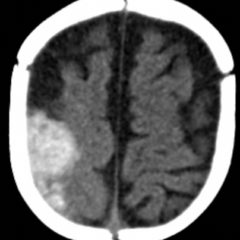Acute Ischemic Stroke
ABSTRACT:
Audience:
Emergency medicine residents. This simulation was designed for emergency medicine interns to teach the basics of stroke evaluation and care.
Introduction:
A cerebrovascular accident (CVA) is an emergent condition that requires rapid diagnosis and treatment. Each year approximately 795,000 people suffer a CVA, leading to over 600,000 emergency department visits for acute ischemic stroke.1,2 With such a high incidence of CVAs, there is an increasing demand on emergency medicine (EM) physicians to meet strict metrics for CVA recognition and care. Data have shown that quick and organized stroke care consistent with national guidelines leads to decreased door-to-needle time, lower in-hospital mortality, lower rates of intracranial hemorrhage, and increased percentage of patients discharged home.1
Emergency medicine interns come from different backgrounds and, although they possess the appropriate medical knowledge, they often lack insight into the hospital protocols and national guidelines that allow them to care for these patients efficiently and effectively. It is important to introduce CVA management early in the education process for early learners to have confidence in managing this disease process. We aim to use simulation to standardize the care and knowledge of CVAs at our institution.
Objectives:
By the end of this simulation session, learners will be able to: 1) recognize a CVA using the National Institutes of Health Stroke Scale (NIHSS), 2) understand and properly utilize the NIHSS, 3) list appropriate imaging and laboratory orders for a CVA work-up, 4) determine appropriate subspecialty consultation, 5) discuss common stroke syndromes and associated cerebral locations, 6) review indications and contraindications for tissue plasminogen activator (tPA), 7) review hospital specific stroke protocol.
Method:
We recommend use of a standardized patient capable of replicating the details of the neurological exam descried. An oral boards format or high-fidelity simulator can also be used if a standardized patient is not available. Debriefing was left to the facilitator who was advised to give open ended questions to gauge reactions and assess understanding.
Topics:
Medical simulation, acute cerebrovascular accident, tissue plasminogen activator, neurology, emergency medicine.

